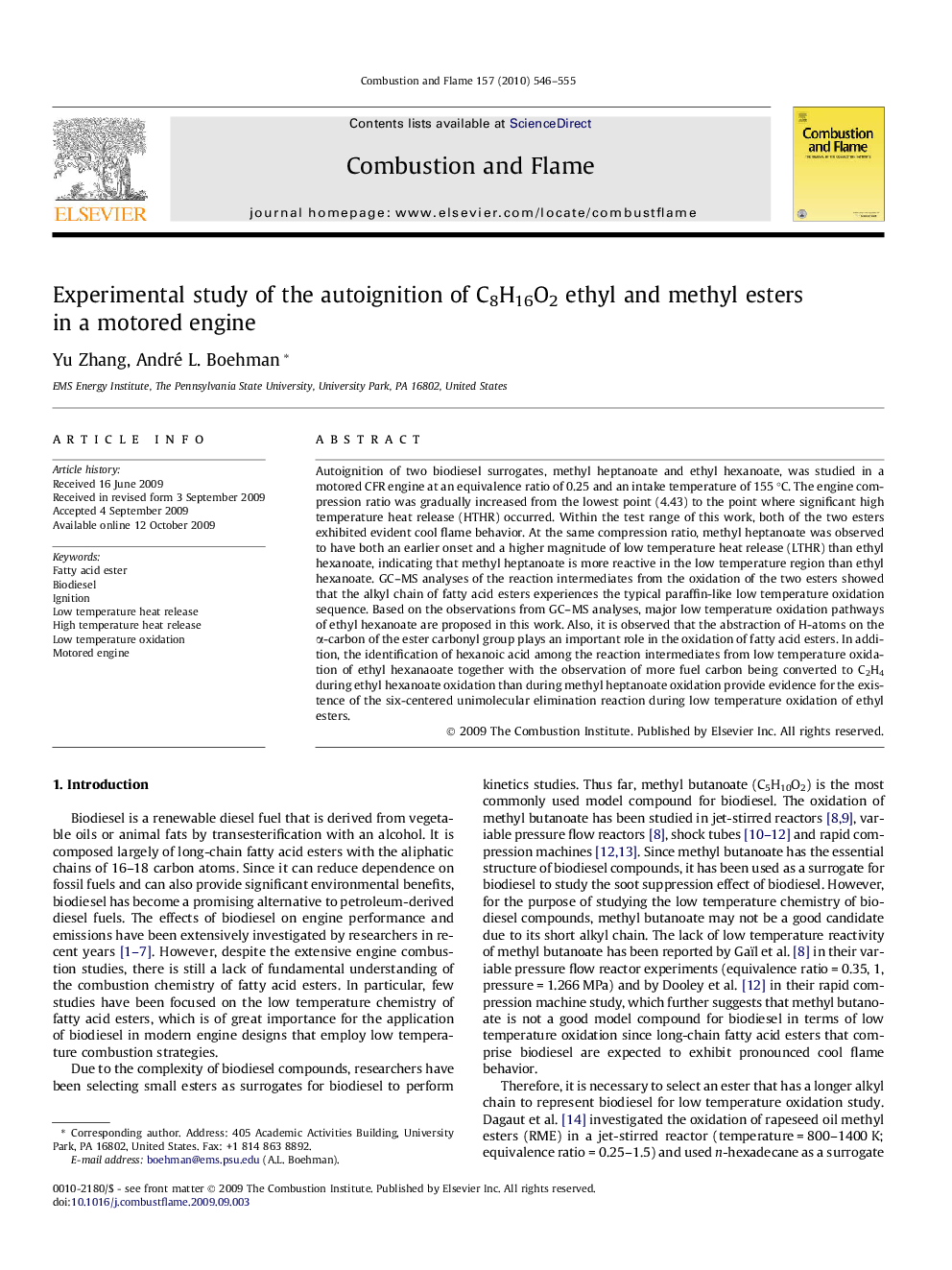| Article ID | Journal | Published Year | Pages | File Type |
|---|---|---|---|---|
| 169686 | Combustion and Flame | 2010 | 10 Pages |
Autoignition of two biodiesel surrogates, methyl heptanoate and ethyl hexanoate, was studied in a motored CFR engine at an equivalence ratio of 0.25 and an intake temperature of 155 °C. The engine compression ratio was gradually increased from the lowest point (4.43) to the point where significant high temperature heat release (HTHR) occurred. Within the test range of this work, both of the two esters exhibited evident cool flame behavior. At the same compression ratio, methyl heptanoate was observed to have both an earlier onset and a higher magnitude of low temperature heat release (LTHR) than ethyl hexanoate, indicating that methyl heptanoate is more reactive in the low temperature region than ethyl hexanoate. GC–MS analyses of the reaction intermediates from the oxidation of the two esters showed that the alkyl chain of fatty acid esters experiences the typical paraffin-like low temperature oxidation sequence. Based on the observations from GC–MS analyses, major low temperature oxidation pathways of ethyl hexanoate are proposed in this work. Also, it is observed that the abstraction of H-atoms on the α-carbon of the ester carbonyl group plays an important role in the oxidation of fatty acid esters. In addition, the identification of hexanoic acid among the reaction intermediates from low temperature oxidation of ethyl hexanaoate together with the observation of more fuel carbon being converted to C2H4 during ethyl hexanoate oxidation than during methyl heptanoate oxidation provide evidence for the existence of the six-centered unimolecular elimination reaction during low temperature oxidation of ethyl esters.
